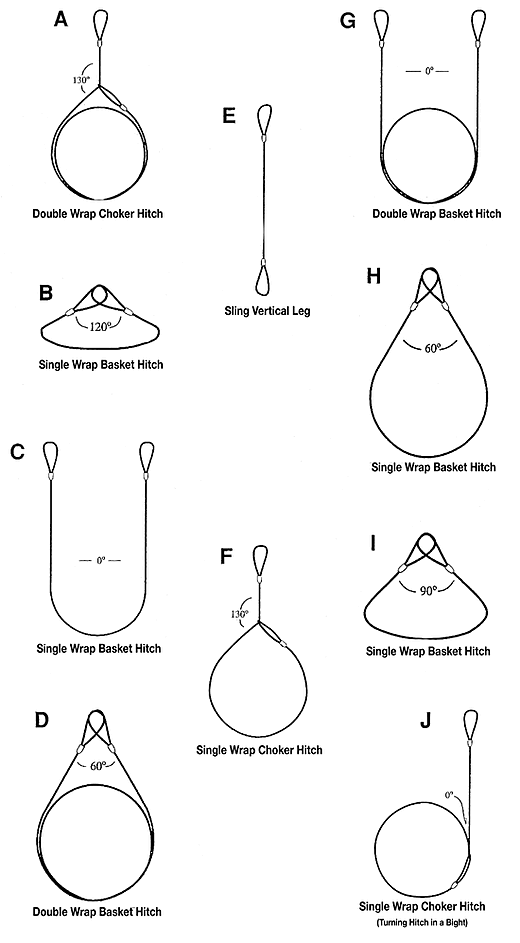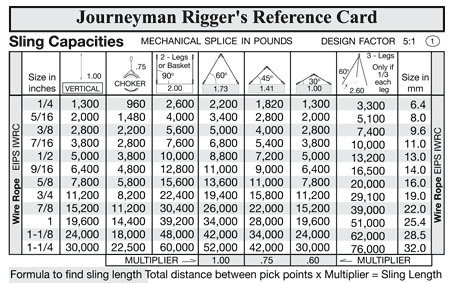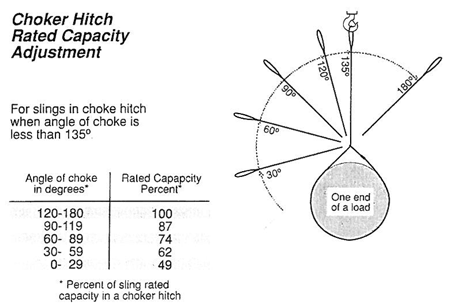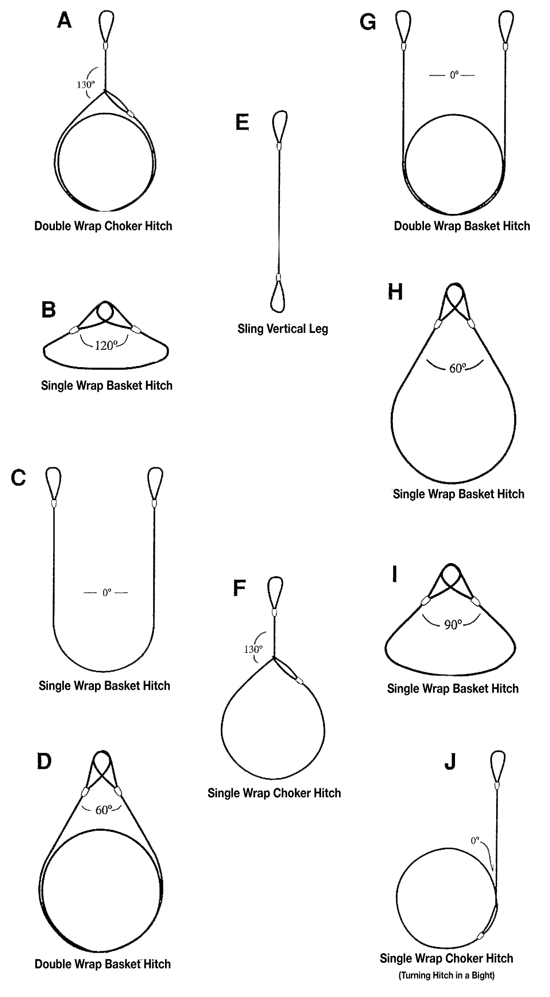Deciding how to rig a load is an important step to achieving load control. An important factor to also consider is that the sling’s capacity can vary greatly depending on the hitch configuration.
Pictured below are 10 different sling hitches. Assume that the slings are 1” (wire rope) E/E mechanical splice and the D/d ratio (load dia./sling dia.) is 30/1 for all illustrations. Identify the slings (A-J) in order of highest to lowest rated capacity and also give their approximate rated capacities.
| High = 1 Low = 10 |
Sling Letter | Approx. Rated Capacity (lbs) |
| 1. | __________ | __________ |
| 2. | __________ | __________ |
| 3. | __________ | __________ |
| 4. | __________ | __________ |
| 5. | __________ | __________ |
| 6. | __________ | __________ |
| 7. | __________ | __________ |
| 8. | __________ | __________ |
| 9. | __________ | __________ |
| 10. | __________ | __________ |

(For sling capacity info, refer to Panel 1 of ITI Bookstore's Journeyman Rigger's Reference Card and AISI chart below.)


Hitch & Capacities
WORKSHOP SOLUTIONS
Riggers should always remember that the type of hitch that’s applied to a load can greatly affect the rated capacity of the sling. This 1” wire rope sling can offer the rigger 34,000 lbs of lifting capacity or as little as 6,272 lbs! How it is rigged makes the difference, and after the rigging system has been selected, it’s up to the rigger to ensure that the sling has the necessary rated capacity to lift its assigned portion of the load.
| High = 1 Low = 10 |
Sling Letter | Approx. Rated Capacity (lbs) |
| 1. | C | 39,200 |
| 2. | G | 39,200 |
| 3. | D | 34,000 |
| 4. | H | 34,000 |
| 5. | I | 28,000 |
| 6. | B | 19,600 |
| 7. | E | 19,600 |
| 8. | F | 14,400 |
| 9. | A | 14,400 |
| 10. | J | 7,056 |
Happy Rigging, Mike Parnell.
P.S. Hitches & Capacities are demonstrated in our Intermediate Rigging Training and Master Rigger Training Courses.
This is an article from The Professional Rigger newsletter, 1990.




COMMENTS